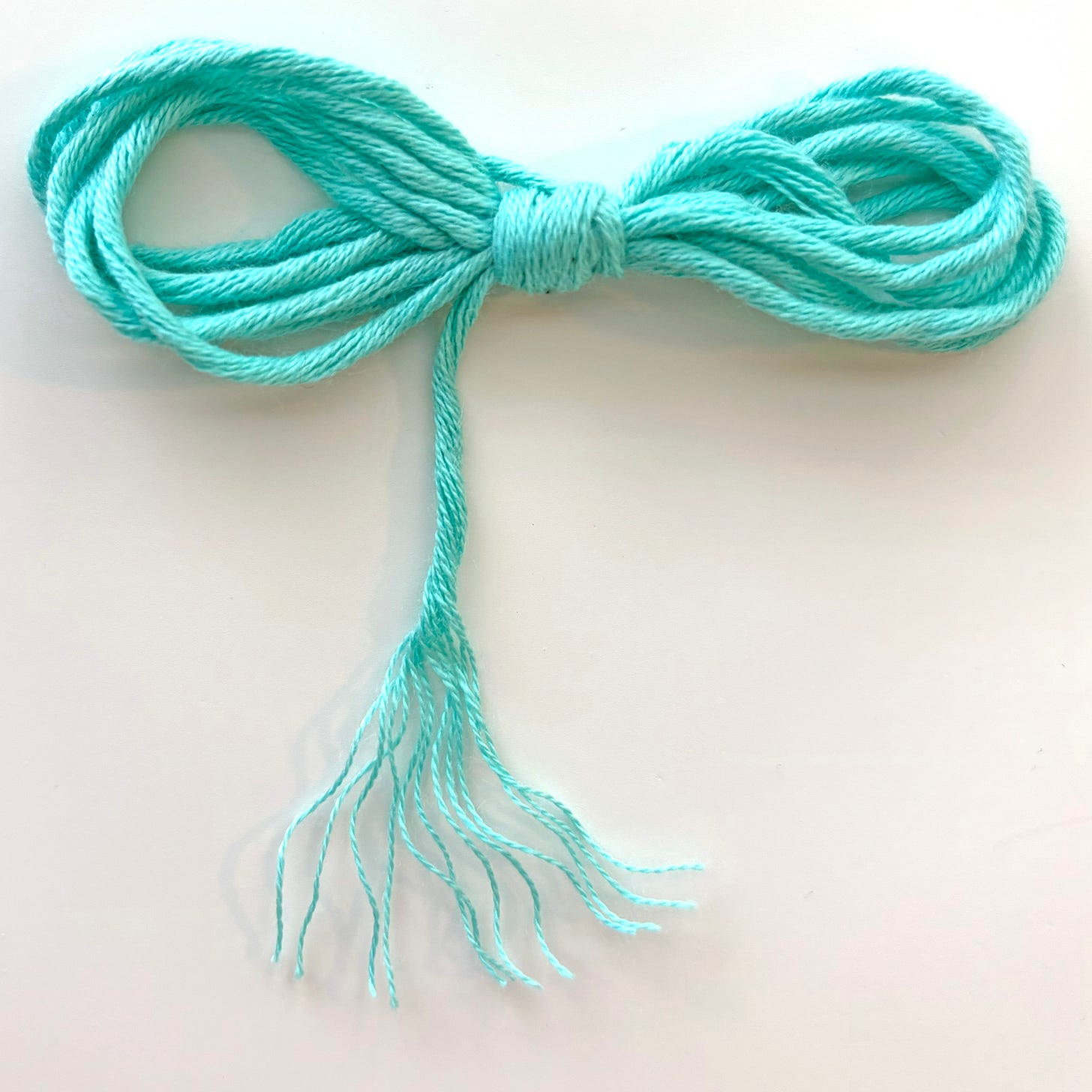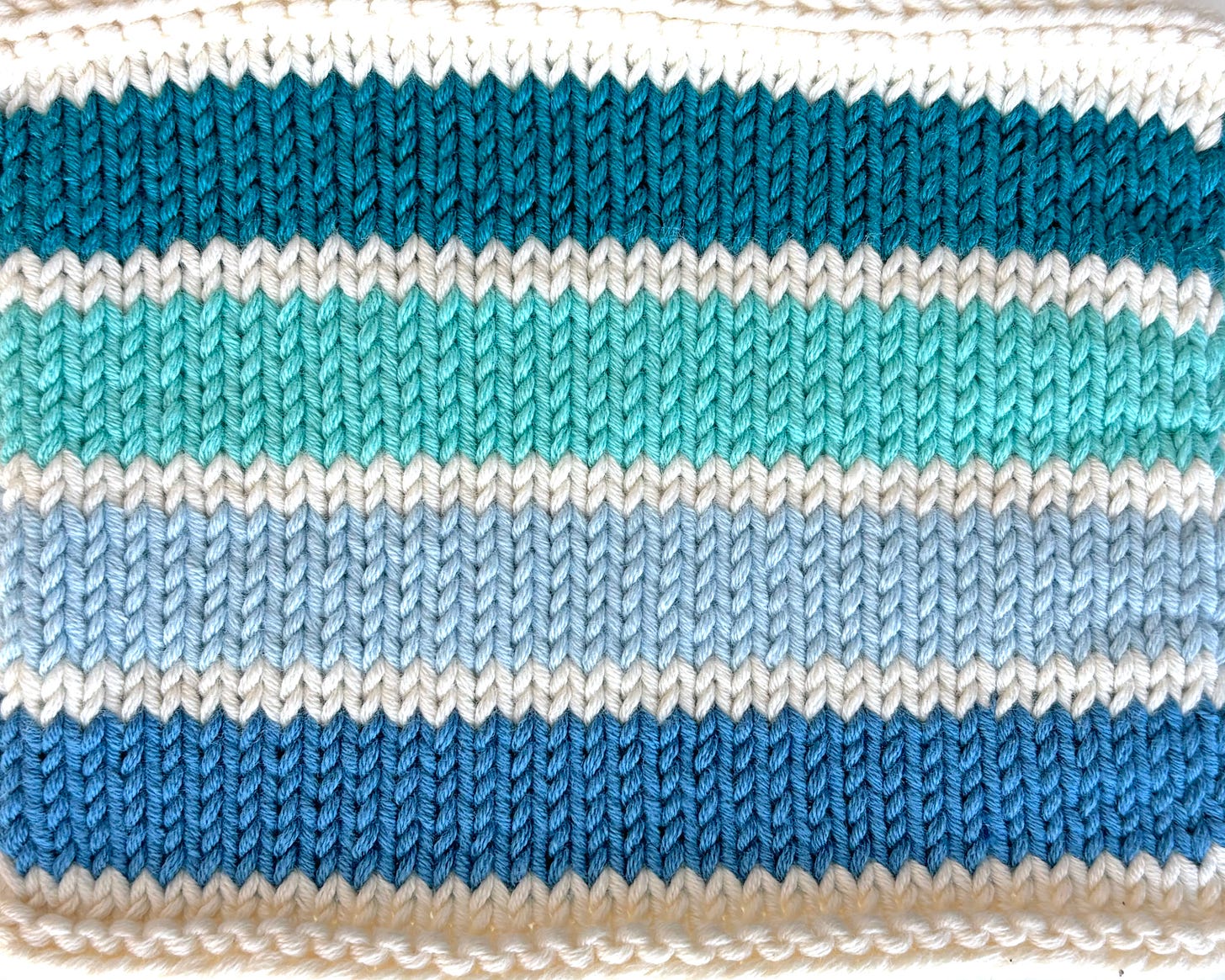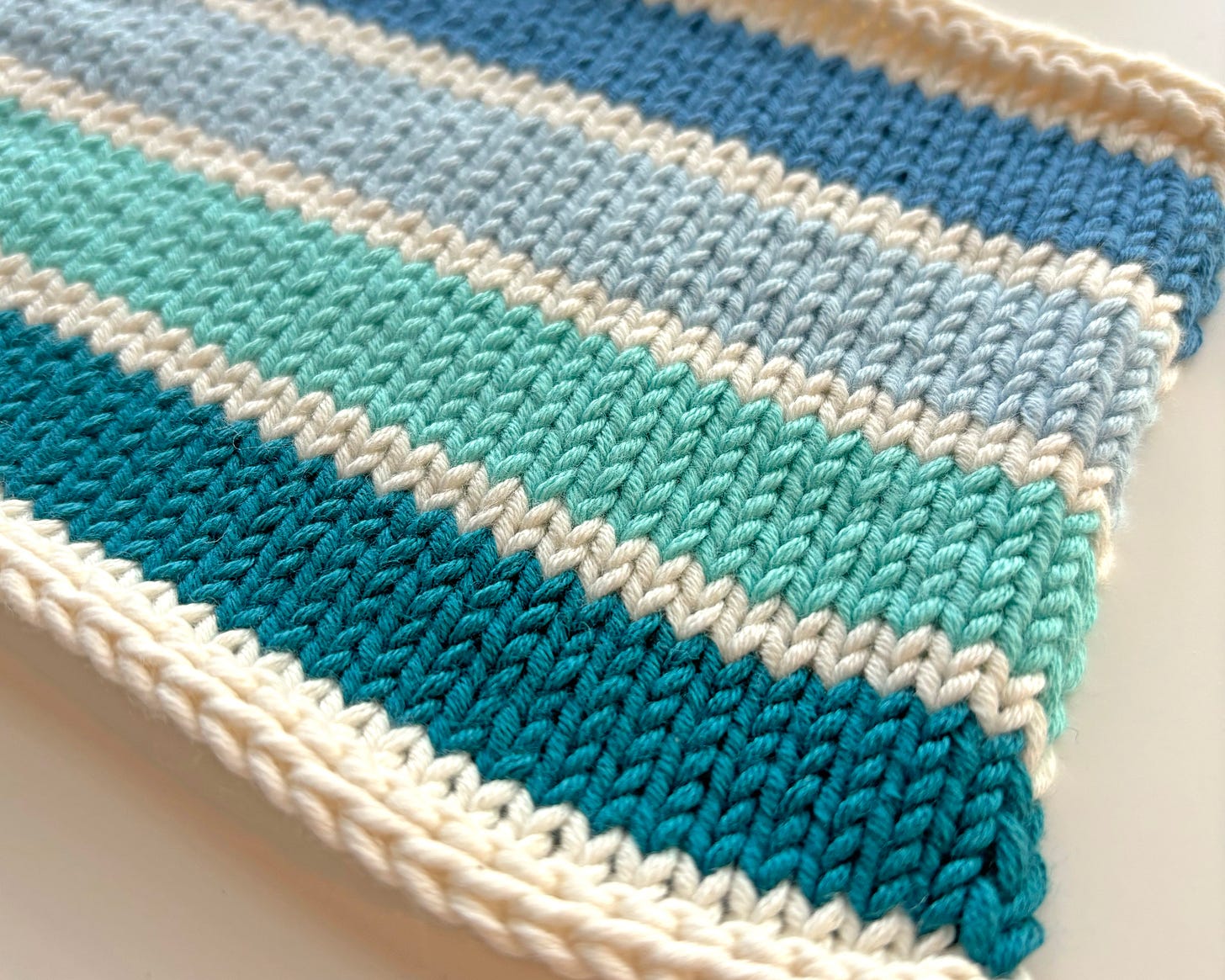Purl Soho released a brand-new yarn this week: Cotton Chirp. I had the opportunity to play with this yarn in advance of the release, and I'm happy to bring you a full review.
FYI: This yarn was gifted to me by Purl Soho with no obligation to use, review, or promote the product. The links are not affiliate links; I receive no compensation for this review, nor will I receive a commission if you make a purchase.
First, the Specifications
This yarn is suitable for use in patterns calling for DK-weight yarn.
Let's Take a Closer Look
This yarn has a complex construction. It is composed of twelve 2-ply strands that are plied together. The fine 2-ply strands are tightly spun, making the yarn very strong; I cannot break it with my hands. The overall 12-ply has less twist, keeping the yarn soft and flexible.
This construction creates a very smooth yarn. The ends of the fibers are firmly held by the tight twist of the 2-ply strands, then buried within the 12-ply. This means fewer fiber ends can rise to the surface and create fuzziness.
The yarn comes pre-wound in center pull skeins. It is evenly and consistently spun, with no slubs or thin spots. I encountered no knots in any of the skeins I sampled.
Let's Look at a Swatch
I knit Cotton Chirp on size US 5 (3.75 mm) needles. My gauge is a bit tighter than recommended—24 stitches and 34 rows = 4" in stockinette stitch.
The label says this yarn is machine washable, and I have no doubt that's true, but it wasn't laundry day. I soaked the swatch in warm water with a drop of wool wash, then rolled it in a towel to remove excess moisture and laid flat to dry. None of the colors bled into the water, or onto the white yarn. The gauge and dimensions of my swatch did not change with washing. This might not hold true if it were machine washed and dried; I usually expect 100% cotton yarn to shrink a bit with a trip through the washer and dryer.
The fabric is quite firm. It would be suitable for items subject to hard wear, like dishcloths and potholders. If I were going to make a summer tee, I'd go up a needle size to create a fabric with a little more drape.
The stitch definition is clear and sharp. The fabric is smooth with just a hint of sheen.
This yarn tends to split during the knitting. This is caused by the relatively relaxed twist of the 12-ply. It's a balancing act when designing a yarn like this—a looser twist will split, but a tighter twist can make the yarn harsh and wiry. Changing to a needle with a blunter tip (Clover Bamboo needles instead of my go-to Knit Picks Sunstruck Interchangeable needles) eliminated the splitting when knitting stockinette stitch. I suspect had I chosen a complicated stitch pattern with complex decreases (p3tog tbl, for example), the splitting would have been more of a challenge.
What You Can't See
Pima cotton was born as a cross between Sea Island cotton (grown in the southeastern US as early as the 1790's) and Egyptian long-staple cotton. In the early 1900's, the US Department of Agriculture partnered with the Pima tribe of Native Americans in Arizona to develop this hybrid cotton variety.
Pima cotton is renowned for its long, strong, silky fibers. Most of the world's supply of Pima cotton is now grown in the northern coastal valleys of Peru.
Mercerization is a process where fibers (usually cotton) are treated with a caustic sodium hydroxide solution to improve fiber strength, shrink-resistance, luster, and dye uptake. The shine you see in products such as sewing thread and pearl cotton is the result of mercerizing. Many yarns marketed as "crochet cotton" are mercerized.
Cotton Chirp is made with cotton that has not been mercerized. The slight sheen I observed in my Cotton Chirp swatch is the product of the long Pima cotton fibers.
The Colors
Purl Soho has taken an innovative approach to this lovely cotton yarn by offering the colors in 4-skein bundles. I enjoy projects knit with stripes of analogous color, and these bundles simplify the task of color selection. There is a lot of knitting fun to be had with one bundle of color combined with one full-sized skein of white.
Of course, if you wanted to use this yarn to knit a sweater in a solid color other than white, you'd end up with lots of leftovers. I'd love to see Cotton Chirp made available in 100-gram skeins in all the colors. But I understand the investment involved in launching a new yarn, and mini skein sets have been wildly popular in recent years.
The Bottom Line
Cotton Chirp will have a place in my warm weather knitting. It's a great machine-washable natural-fiber choice for baby garments, blankets, tees, and summer sweaters. It would make lovely hard-wearing kitchen items like potholders and dishcloths, but I'd probably choose a less costly yarn for projects of that kind. I’m not a knitter of dishcloths, and I don’t think I could bring myself to plunge something made with this beautiful yarn into a sink of dirty dishes.
When this newsletter is sent (on Thursday), I'll be in just outside Chicago at h+h americas, the wholesale trade show. The following day, I'll be heading to the Baltimore area to attend the Maryland Sheep & Wool Festival. It's a full immersion week for me! I might be a little slow to respond to comments and messages.
I'm planning to give you a report on Maryland Sheep & Wool next week. In the meantime, here's a link to an article I recently wrote for Farm & Fiber Knits about how the Festival, now in it's 51st year, continues to thrive.
Do you have a favorite yarn for warm-weather knitting? Tell us about it in the comments.










I love Pima cotton but did not know about its origin. Thank you for this lovely article and review. So far cotton+acrylic, cotton+linen blends have worked well for warm weather knits for me.
I didn't know that was the origin of Pima Cotton! Love iinteresting facts like this! Nice to meet you!